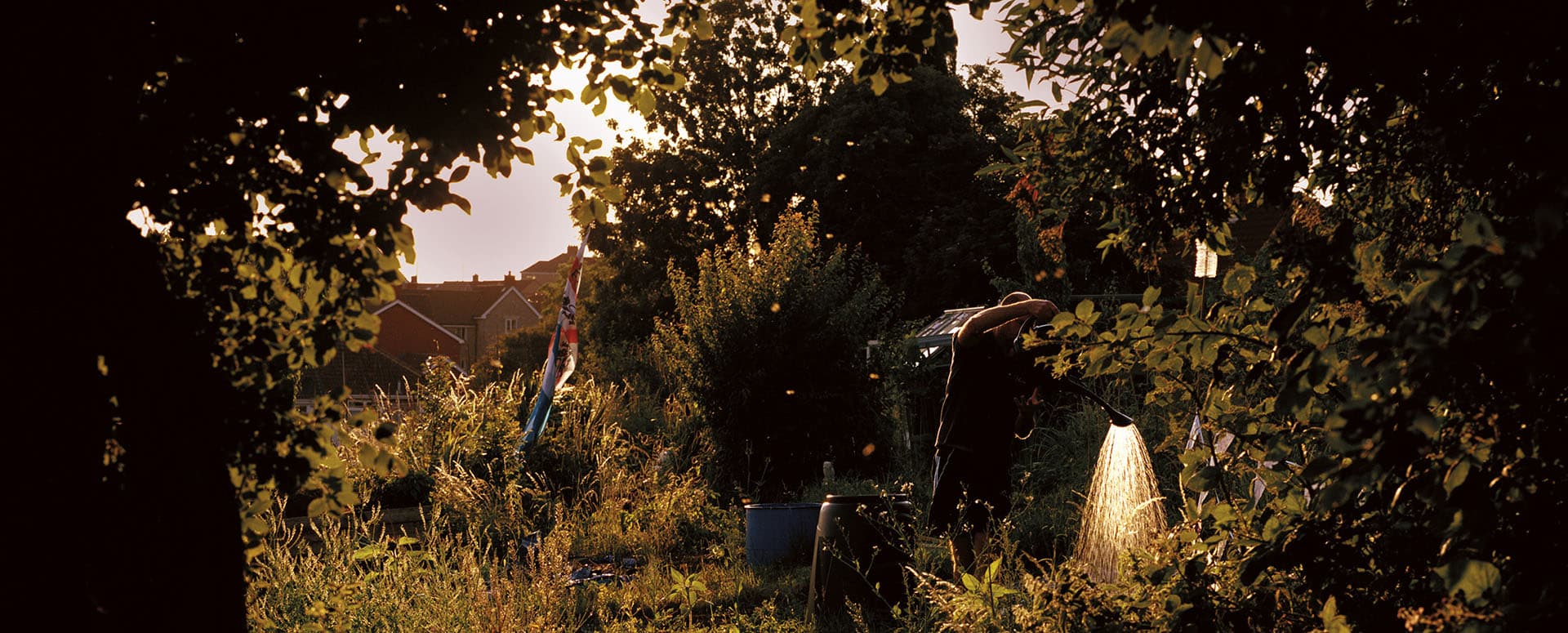I’ve had an allotment for 14 years. It’s been a lesson in realising that growing your own fruit and vegetables is a burden and a curse. In Winter, there is no light, hard frosts kill off the more delicate greens, and cold-resistant white flies munch through whatever is left. If you’re lucky, you might end up with a few holey branches of kale or a fly-ridden cabbage.

Get to spring and things aren’t much better. You either wait for the sun to come out properly in which case you don’t plant anything till May or June, or you plant early and have a late frost turn your potatoes and beetroot to limp-leaved compost. You can plant your bean seeds in situ and watch the rains come, and the slugs and snails emerge; hundreds of the evil creatures coming out of them to eat the food that is supposed to sustain you through the spring and summer.
And if the slugs and snails don’t get it, the deer will. They’ll eat your flowers, dig up your carrots, nibble on your mange tout, and generally destroy the place in the process. The badgers come all year round, but save their best for the autumn. Come September, your sweetcorn will be almost perfect, and guaranteed the badgers will come the night before you’re ready to harvest, flatten the stalks to the ground and steal what was rightfully yours.


It’s a dog’s dinner of a job, growing your own vegetables, a dog’s dinner that the occasional glut of courgettes in no way compensates for. And it’s not cheap. You pay your £30 for the annual allotment fee, but then there are seeds that need buying, soil that has been exhausted for the benefit of the local wildlife that needs replenishing, new wood is needed to replace the slug and snail hidey holes the raised beds have become.
Essentially, you spend a fortune growing carrots that will be shat on by foxes and feasted on by snails, badgers and deers, when you could buy a 49p bag of them in the local supermarket.


Why do we do it? Growing Spaces by Chris Hoare gives a visual explanation. It’s a book of beautiful images of Bristol allotments where the physical, spiritual, and spatial beauty of being in an allotment is made apparent. Seductively photographed during the late evening, the book features the sensory elements that make allotments such appealing environments.
In Growing Spaces, Hoare captures a sense of the dappled light pouring through the trees, he photographs the affection with which a bearded gardener holds back his Verbascum, he captures the ways in which an allotment becomes a playground, a site of relaxation, an escape from the dank interiors of Bristol suburban life. These are spaces where beers are drunk, fires are lit, and you fall in rhythm with the small patch of greenery that surrounds you.


People smell flowers, ripe plums are cracked open, plants are watered, insects buzz, and people busy themselves with digging, weeding, and building in the ramshackle style that is the British allotment.
This is a book about the simple pleasures that are provided by our senses, pleasures that hint at other gaia-centric ways of being. To feel the soil on one’s fingers, to have the scent of decaying vegetation in morning mist flow into one’s nose, to hear the rustle of the wind blowing through leaves, or to watch the dance of bees in a summer bloom of hollyhocks gives you something that you will never find in a human-built environment.
And that is why a carrot, courgette, or cauliflower that are grown in an allotment are always better than one bought in a supermarket. And that is why we do it.
By Colin Pantall
Colin Pantall is a writer, photographer and lecturer based in Bath, England. His photography is about childhood and the mythologies of family identity.
Growing spaces by Chris Hoare, RRB Photobooks, 80 pages, RRP £28 | £95 with print.






